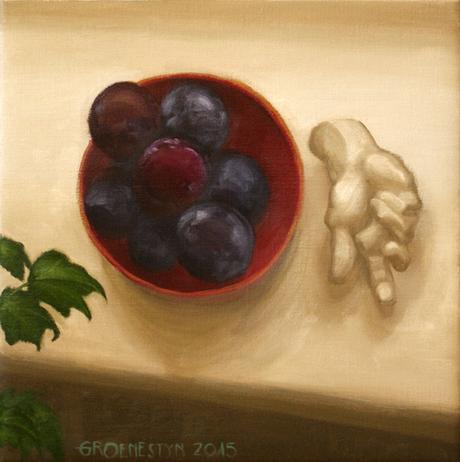
Pflaumen © Samantha Groenestyn (oil on linen)
There have always been things too profound to express, and humanity has always sought ways to grapple with these elusive, ineffable thoughts. Whether through religion, philosophy or art, we have spent sleepless nights labouring over the questions we cannot quite articulate, the chains of reasoning we cannot quite lay out systematically, the conclusions which evade us as fog resists our grasp. Wittgenstein (in Sontag 1969: XII) says that ‘everything that can be thought at all can be thought clearly. Everything that can be said at all can be said clearly. But not everything that can be thought can be said.’
And so, argues Susan Sontag (1969: XIII), ‘the artist issues his own call for a revision of language.’ The artist invites—‘administers,’ even—silence. The artist acts in the face of ‘the habits of lifeless, static verbalisation, presenting models of “sensual speech”.’ So much is said, and yet so little gained by this cacophony. And so much more is lost: for all our eloquence, our senses are blunted. With painful accuracy, Sontag (1969: XIII) writes: ‘We lack words, and we have too many of them.’ Words fail to get at what we really want to illuminate: they prove themselves crude, but in their desperately mounting explanations and arguments they bathe us in an unbearable busyness, ‘inviting a hyperactivity of consciousness … which actively deadens the mind and blunts the senses.’
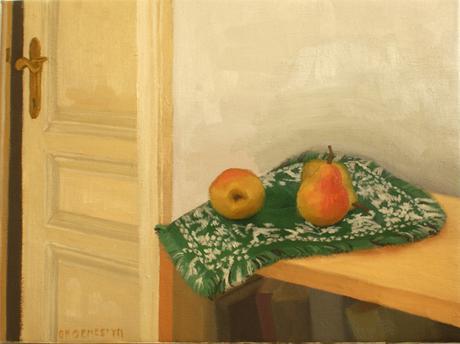
Birnen © Samantha Groenestyn (oil on linen)
The artist, unsurprisingly, cowers from this chatter. The serious artist, Sontag (1969: II) suggests, ‘is continually tempted to sever the dialogue he has with an audience. Silence is the furthest extension of that reluctance to communicate.’ The artist, living more fully in his body, thinking in sensory experiences more than in verbal ideas, is not retreating solely to contemplate, nor to ready himself to explain himself. He really stands at the edge of the abyss, desperate to plunge himself into silence. ‘For, to be a victim of the craving for silence is to be, in still a further sense, superior to everyone else. It suggests that the artist has had the wit to ask more questions than other people, as well as that he possesses stronger nerves and higher standards of excellence.’
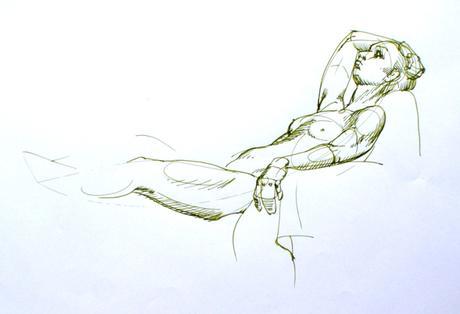
Yet silence need not consume us completely. According to Sontag (1969: XV), Rilke considers it enough ‘to cut back drastically the scope and use of language.’ Similarly, she (1969: XIII) describes Mallarmé’s intention to use words—poetry—‘to clean up our word-clogged reality—by creating silences around things.’ Silence both implies and demands its opposite, and that calls on the artist to produce something dialectical: to participate in a dialogue, even if his role is to punctuate that dialogue with silences.

For what precedes words, and what follows them, but silence? Sontag (1969: XIII) explains, ‘Silence, then, is both the precondition of speech, and the result or aim of properly directed speech.’ The artist sandwiches speech with his wordless meditations, guiding avid speakers through quiet milieux. ‘The efficacious artwork leaves silence in its wake,’ just as Wittgenstein considered his Tractatus a ladder to be climbed and cast aside with the attainment of understanding; just as he abandoned philosophy after producing this work and turned to humble menial labour in Vienna. The yawning silence that Wittgenstein left behind him was not a disavowal of everything he had said; rather, his work had been a sort of deliverance (Sontag 1969: II). The artist does not search for his voice, his message, his marketable style: he seeks closure, the stillness of silence, and his work is the only means he has to reach this delicious promised land.
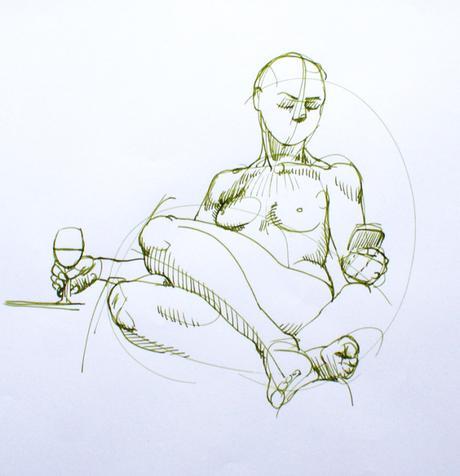
In smaller doses, silence provides some relief from the continuous barrage of speech. It makes room for thought—for its prolongation, extension; for exploring the hidden alleys and backstreets of thought that we’d otherwise avoid. Because, ‘notably, speech closes off thought’ (Sontag, 1969: XIII). But used deliberately in speech, silence brings gravity and solemnity to words. It slows their burbling pace and lends dignity to them: ‘when punctuated by long silences, words weigh more; they become almost palpable.’ And we ourselves become more palpable to ourselves, we become more aware of our bodies: ‘when one talks less, one starts feeling more fully one’s physical presence in a given space.’
Art—painting, perhaps literature, poetry, music, at the very least—takes up the lofty aims of philosophy and religion to clear our heads, to touch something difficult to reach, to slow the rush of businesslike verbal exchange. For even ‘language can be employed to check language, to express muteness’ (Sontag 1969: XIII). But my beloved painting and drawing stand in a firmly wordless domain, resisting thorough explanation and description, demanding but to be seen, tugging at the senses. And they remain painfully, infuriatingly, resolutely silent in the face of words, warring against words in their reclamation of the body, of the senses. Sontag’s (1969: XIII) rallying cry defends this retreat: ‘Art must mount a full-scale attack on language itself, by means of language and its surrogates, on behalf of the standard of silence.’
For Ryan.
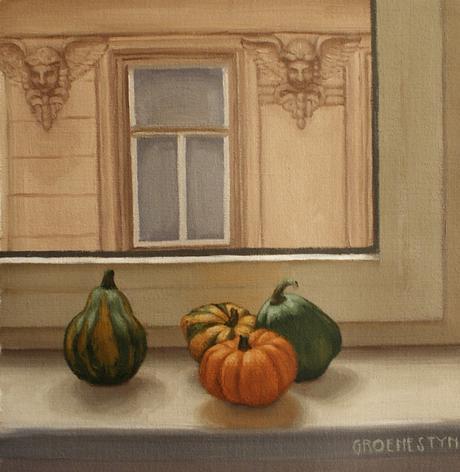
Kürbisse © Samantha Groenestyn (oil on linen)
Sontag, Susan. 1969. ‘The aesthetics of silence.’ In Styles of radical will.

